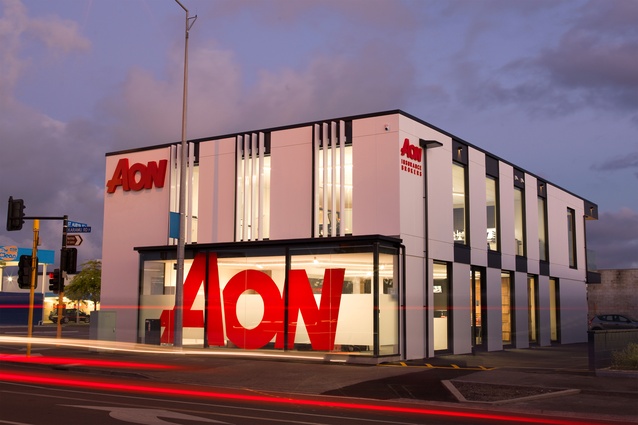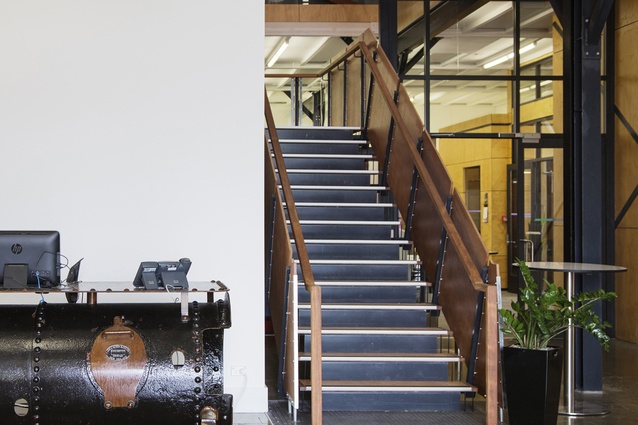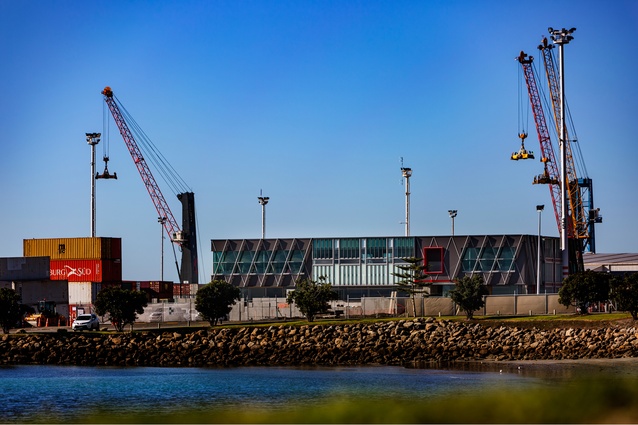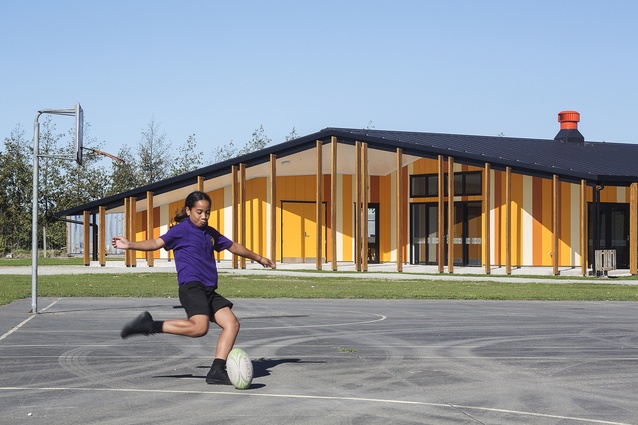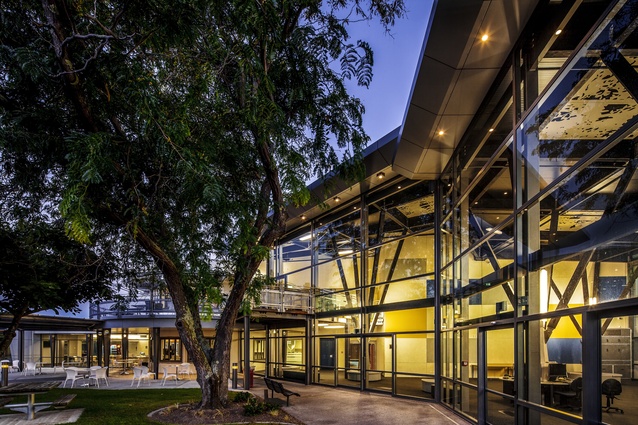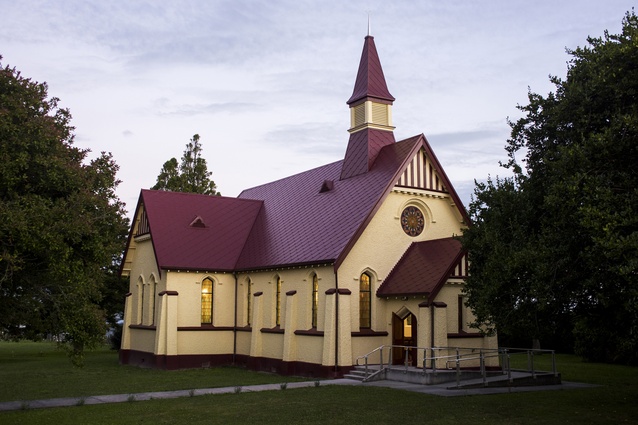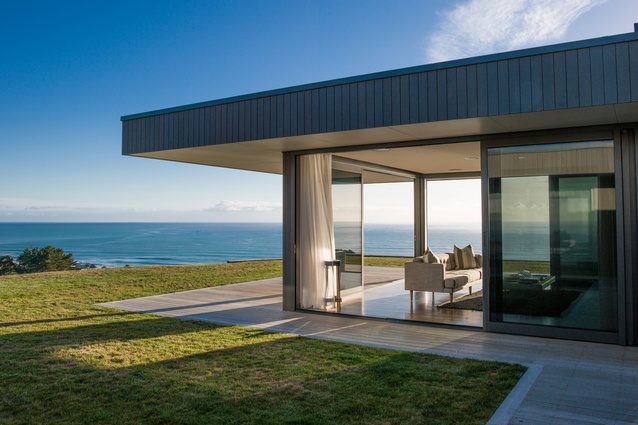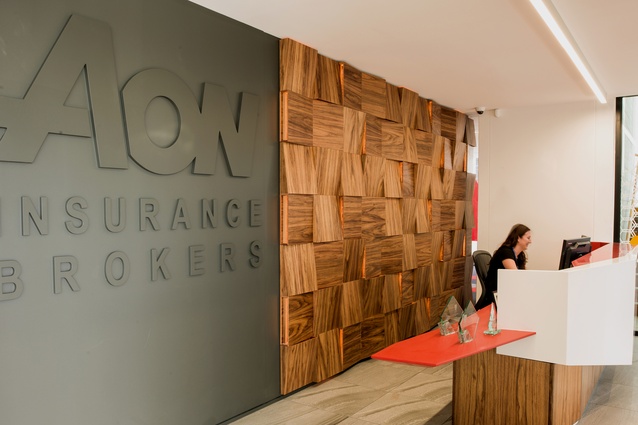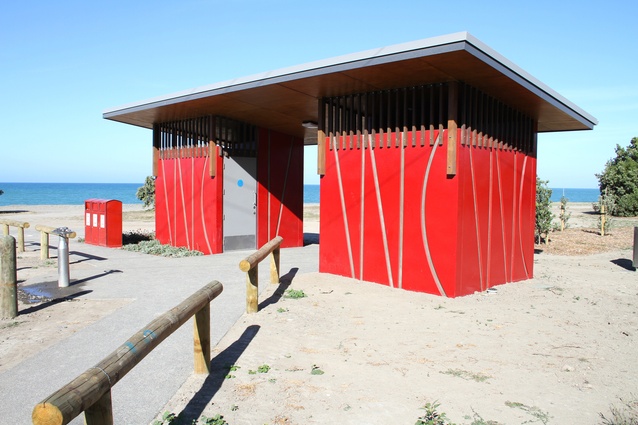Gisborne–Hawkes Bay Architecture Awards
Ten projects, ranging from a colourful Māori immersion school to a herringbone-patterned port building, received awards at the 2016 Gisborne–Hawkes Bay Architecture Awards evening, held at the Blyth Performing Arts Centre in Havelock North on Friday 13 May.
Napier architect John O’Bryan, the awards jury convenor, said the award-winning buildings are exemplary responses to a range of cultural, heritage and environmental conditions.
“These awards demonstrate the range of skills architects need to have. The list of winners reveals architects working as mediator, collaborator and project manager, pulling together disparate project strands, satisfying commercial and environmental imperatives, and driving projects to successful conclusions,” O’Bryan commented.
Full list of winners with jury citations below.
COMMERCIAL ARCHITECTURE AWARDS:
Aon Hastings by Matz Architects

This developer-led project, now occupied by an insurance company, illustrates how, through the modulation and scale of the façade elements, this stretch of Karamu Road in Hastings, which has been degraded through a succession of buildings that have pulled away from the street edge, might be improved. Aon revives the street edge through contrasting horizontal and vertical elements – glazing interspersed with off-form concrete walls – that contribute towards a vibrant, environmentally responsive design. By setting back the upper floor the visual mass of the building is diminished, while vertical louvres have been used to set up a rhythm across the façade. The entire design concept re-reclaims the street and provides an inviting space for the company’s staff and for the wider community.
Hawkes Bay Business Hub by Paris Magdalinos Architects

It is fitting that this design concept for the new Hawkes Bay Business Hub is sympathetic to the rich industrial tradition of Ahuriri Napier. The design references the materials and proportions that comprised the former tobacco warehouse, but the design and reconfiguration of interior spaces and the considered adaptions to the exterior fabric have successfully refashioned the building into a vibrant contemporary workspace. The palette of warm materials and paint finishes highlights new insertions that complement the building’s existing structural rhythms. The entry area – more akin to a café than a corporate reception – is refreshingly informal, and helps set up a semi-industrial aesthetic – enhanced by a reception desk cut from an old boiler and an exposed steel stair – that continues through into a workplace of plywood-lined pods and glazed partitions.
Napier Port by Paris Magdalinos Architects

This clean-lined and completely formed building consolidates the port’s operations and management into a single structure through a design that aptly resolves the technical segregation required by public and port users. Sited on a plinth that alludes to the riprap rock that forms part of the port’s water’s edge, the building is imbued with abstract nautical and industrial references – pronounced windows, for instance, segmented into vertical and horizontal elements, recall the effect of stacked containers viewed from a distance. Inside and out, the ‘herringbone’ patterning created by the structural and shading elements lends the structure a distinctive rhythm. The overall effect is a building that is carefully and appropriately anchored to its site.
EDUCATION AWARDS:
Te Kura Kaupapa Māori o Ngāti Kahungunu o Te Wairoa by RTA Studio
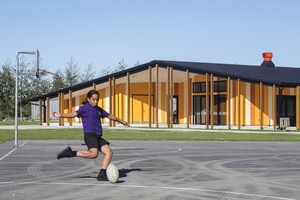
This kura kaupapa (Māori immersion school) is a sculptural building with strong, cloaking roof forms that enclose the classrooms that radiate out from the central hall at the school’s heart. The design provides cohesion and identity, and anticipates future expansion through the extension of the wings out into the landscape. Integrated throughout are excellent environmental responses: the building is orientated on a north-south axis for light and warmth but a wide, covered transition between inside and out protects each learning space from the eastern and western sun. Natural light is prioritised, as is cross ventilation, with roof vents in the cathedral ceilings offering further means to purge the structure of excess heat. This work is true architecture, interwoven with references to the past that will now inform the future, and with significant cultural and environmental elements that have been adapted into physical form with great finesse.
Resene Colour Award
Rich, earthy colours tie the school not just to the environment but to the students who helped select the palette. The school’s base colour of purple is complemented with varied shades of green, to reference native flora, and a bright and vibrant yellow that brings the sun down to earth.
EIT Campus Amenities by Paris Magdalinos Architects
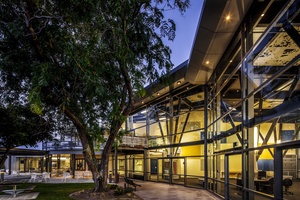
This multipurpose facility for EIT illustrates a contemporary approach to the design of learning spaces. The centrepiece of the campus is a new atrium, which also fulfills a role as a learning hub and communal space for students. The atrium responds to the varied and complex interfaces around its edges with a clean and legible form, while inside, structural elements – concrete plinths with glulam ‘branches’ –acknowledge the well-established tree canopies in the adjacent courtyard, blurring the distinction between natural and built forms, and visually and metaphorically relating the common space back to the exterior.
HERITAGE AWARD:
Toko Toru Tapu Church, Manutuke by Architects 44
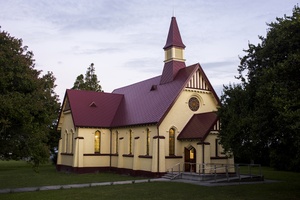
The architect’s contribution – over 15 years – goes well beyond what one would typically expect of a design engagement. Heritage preservation, the drafting of funding submissions and physical contributions to the internal preservation work were all part of a role that has seen a now enhanced building preserved for future generations. Toko Toru Tapu Church is one of the most important Māori churches in New Zealand and probably the most historically significant church in the East Coast region. The church’s sympathetic and discreet structural upgrade retains the integrity of the original building, with carbon-fibre, inserted behind exceptional whakairo (carved wooden panels), helping bring the church up to 100 per cent of the earthquake strengthening code. The selection of appropriate materials, including a roof sourced from the USA, has restored – or perhaps even improved upon – the church’s former glories.
HOUSING AWARDS:
Karl Residence by Brendon Gordon Architecture
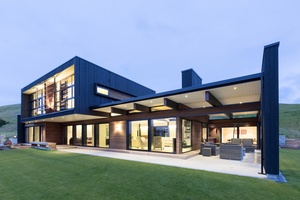
A confident and dramatic design beautifully constructed from understated materials – that’s one way to describe this wonderful house. Strong and symmetrical, the house sits serenely above what can only be described as a commanding view. It is spacious and calm, with well-proportioned spaces that open out into a succession of well-defined outdoor rooms. Throughout the interior, a rich and contemporary atmosphere has been achieved through weighty dark timber beams that clearly express the building’s inherent geometries. On the exterior, dark-stained cedar contrasts with clear-oiled cedar – a compositional blending that allows the structure to visually recede into the landscape when viewed from a distance.
Nicol Holiday Home by Clarkson Architects
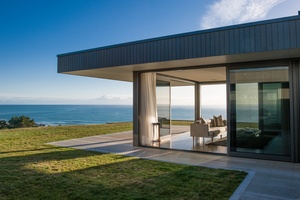
On arrival, an unassuming entry resides between concrete block walls. Almost austere, it conceals an intimate pavilion-style house cleverly constructed from robust materials. Surrounded by open-air walkways, evocative of traditional bach-like qualities, and orientated for seaviews, the house also offers a private courtyard experience in which shelter can be found from prevailing winds. The neutrally toned palette of materials allows the building to sit lightly in the landscape, able to enjoy wide views through expansive windows that are framed between the projecting eaves.
INTERIOR ARCHITECTURE AWARD:
Aon Hastings by Matz Architects
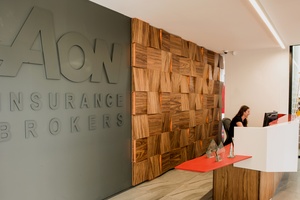
The overwhelmingly positive staff reaction to their new work environment speaks volumes of the success of this interior project. Confident and vibrant, the design benefits from consistent detailing across both the ‘hard’ and ‘soft’ fitout elements, with the result being a cohesive and complete interior experience. This is a layered interior, designed to contrast or complement, and the architect has succeeded admirably with a varied material palette that includes vibrant hexagonal coloured pads, various timbers, and soft furnishings that bring warmth and texture. Well-crafted details, such as interior window projections and faceted timber panels, at the reception and on other wall surfaces, lift the entire experience above the prosaic and make this a warm, rich and humanly scaled workplace.
SMALL PROJECT ARCHITECTURE AWARD:
Clifton Road Reserve Public Toilets by Citrus Studio Architecture

Robust and practical, but also vibrant and cheerful – this well considered toilet block is happy to be seen in the round. Cleverly sectioned into two simple forms, the building’s precast concrete walls anchor the structure and ensure its durability. In contrast, the roof ‘floats’ above, allowing fresh air and natural light to filter between the third material element, hardwood battens, that provide a sense of natural texture and shadow play. The smooth, bold-red finish expressed against the playful ‘WC’ inscription is a bold focal point for the surrounding reserve.
All winners of the 2016 Gisborne–Hawkes Bay Architecture Awards are eligible for shortlisting in the New Zealand Architecture Awards, which will be decided later in the year, and announced in November.

